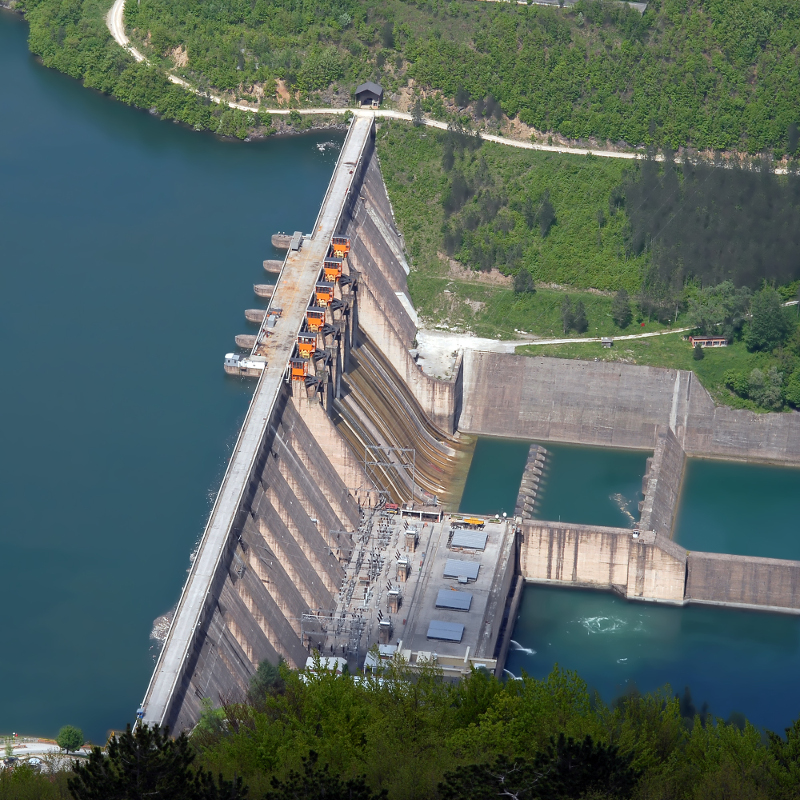Hydroelectric

The conversion of the energy of waterfalls using hydroelectric projects (water supplies, dam, closed chute, water turbine, electric generator, canal vanishing) produces hydropower. The hydro plants exploit the natural process of the water cycle.
The operation of hydroelectric units based on the movement of water due to head height difference between entry and exit points. For this purpose made a dam that retains the required amount of water generated in the reservoir. During its passage from the chute moves a turbine that activates the generator.
Two of the major factors that determine the production of the unit is the volume of water flow and head height differential between the free surface of the reservoir and the turbine. The amount of electricity produced is proportional to the two sizes. For this reason, hydroelectric units smaller capacity of 30 MWe are classified as small-scale hydropower projects and included among the power plants from renewable sources.
During the operation, part of a river flow is led to a turbine to produce mechanical power, and hence electricity through the generator. The amount of water is then returned to the natural reservoir following its natural flow.
Advantages
The main advantages of hydropower from large and small scale units are:
- It is a “clean” and renewable source of energy, with the consequent benefits: o Saving Exchange. o Exploitation of natural resources. o Environmental protection. o Through the reservoirs have the opportunity to meet other needs such as water supply, irrigation, halting streams, creating wetlands, recreational areas and sports
- The most important, perhaps, is the advantage of the selling price of electricity, which is directly competitive with the System Marginal Price (O.T.S.) and the price cost of producing energy from fossil fuels and natural gas.
Disadvantages
As mentioned disadvantages only results related to large scale projects of large hydroelectric power, such as :
- The large dam construction and installation cost of equipment, and the usually great time required for completion. The strong environmental deterioration of the project area (including the geomorphology, flora and fauna) and the possible transfer of populations, the degradation areas, the required land-use changes,
